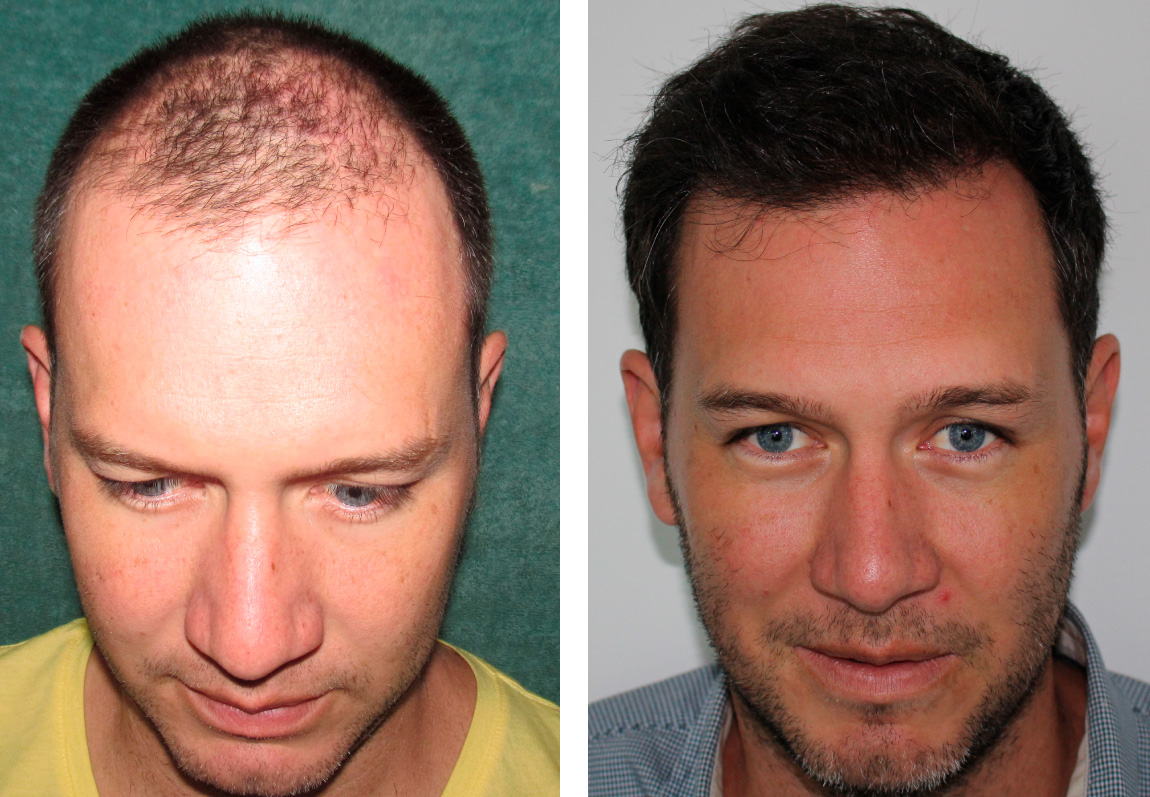STEPS OF SURGERY
Follicular unit transplantation is an outpatient procedure that can last between four and seven hours. It is under local anesthesia and virtually painless. Like other surgical procedures, hair transplantation requires a complete presurgical evaluation.
Step 1
Preparation for follicular restoration.
Step 2
Taking donor tissue.
Step 3
Preparation of the grafts.
Step 4
The transplant.
Step 5
The new hair and the new image.
Step 1: Preparation for follicular restoration
Preparation for the procedure is just as important to the procedure itself. A complete medical evaluation is performed, in case you are a candidate and you decide for surgery, you will be requested blood tests, we will prepare a surgical plan and all concerns will be answered. Additional photos are taken and instructions are given.
Our interest is that your experience is pleasant, safe and the desired result is obtained.
The day of the surgery begins with a detailed explanation of the steps of the procedure and the optimal design of the hairline, which should be similar to that specified in the consultation. Once the surgical plan and strategy has been confirmed, the procedure itself begins.
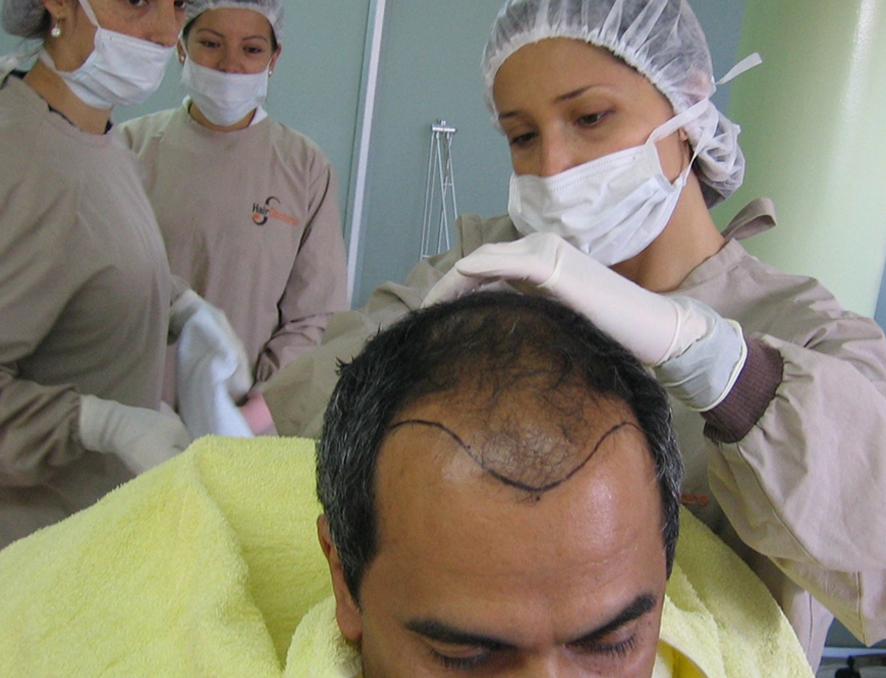
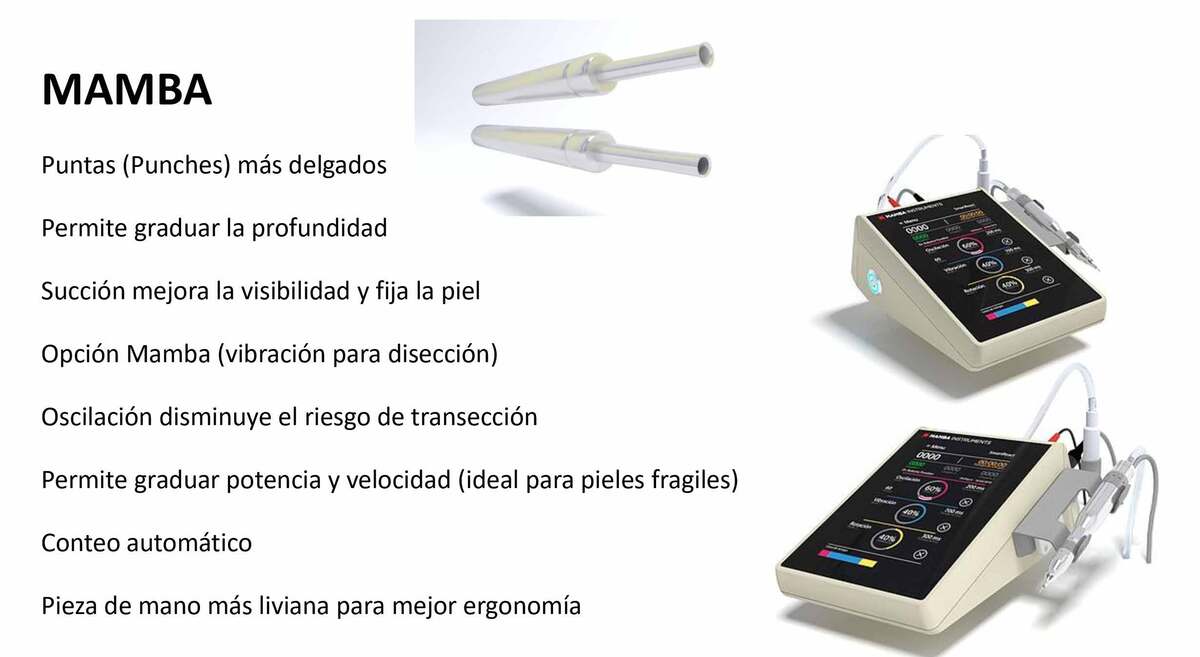
Step 2: Take donor tissue
A. Shaving
The chosen donor area is shaved. Sometimes you can avoid shaving the donor area, or doing it in layers so that the extraction site is not noticeable.
B. Extraction
The donor area, located on the sides and back of the scalp, is where the Follicular Units that are needed are removed. This is done with a device that has several operating options to adjust them according to the characteristics of the donor area: adherence of the follicles to the rest of the scalp, length of the follicular unit, caliber of the unit, blood perfusion, friability, among others.
Step 3: Preparation of the grafts.
In this step, with the help of magnification either stereoscopic microscopy or magnifying glasses, the follicular units are classified according to the number of hairs that each unit has. On average they have 2.5 hairs each. This process requires a lot of manual dexterity, training, and experience, prerequisites for the entire HairDoctors team.
During preparation, the grafts are stored at low temperatures and in ice-cold saline.
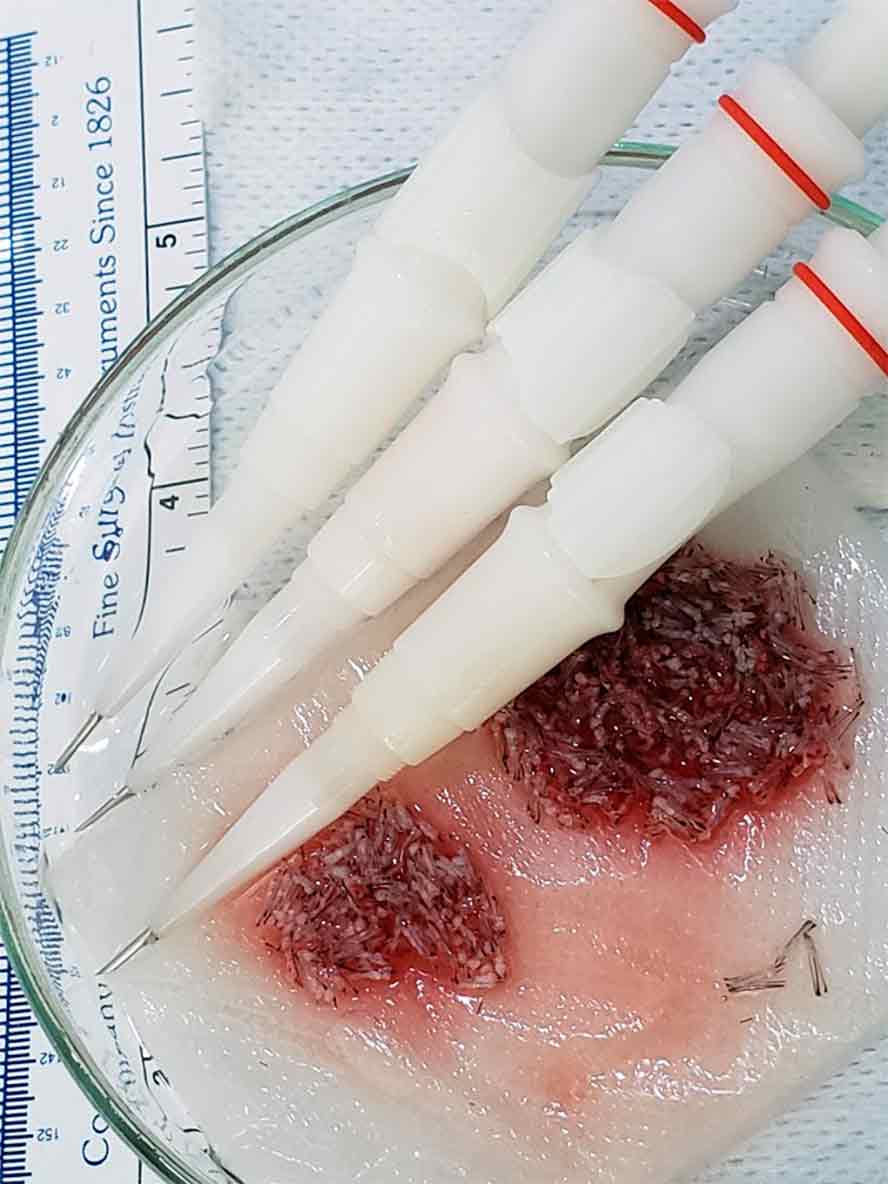
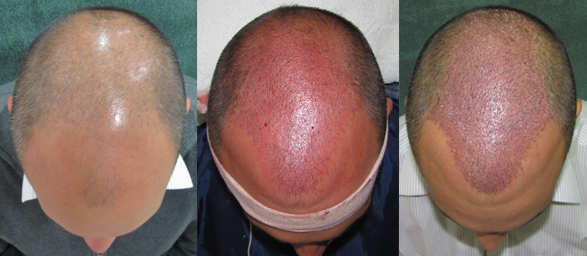
Step 4: The Transplant
In the first technique, the surgeon makes tiny cuts (approximately the size of a needle (0.7 to 0.85 mm depending on the caliber of the units), with different angles and directions, recreating a natural hairline. carefully selected are inserted into these holes with implants of the corresponding caliber. These openings are so small that bleeding is minimal and the same edges around help to hold the graft. The natural result is achieved by implanting grafts of a single follicle in the anterior area and follicles with two or more hairs in the posterior areas.
In the second technique, the step of the previous incisions is skipped and the grafts are sown directly with the implants. It is a faster procedure, but it can sometimes be more costly, especially in cases of very thick skin, scars or when the “popping” occurs, which is the exit of the implanted graft at the time of inserting the neighboring graft.
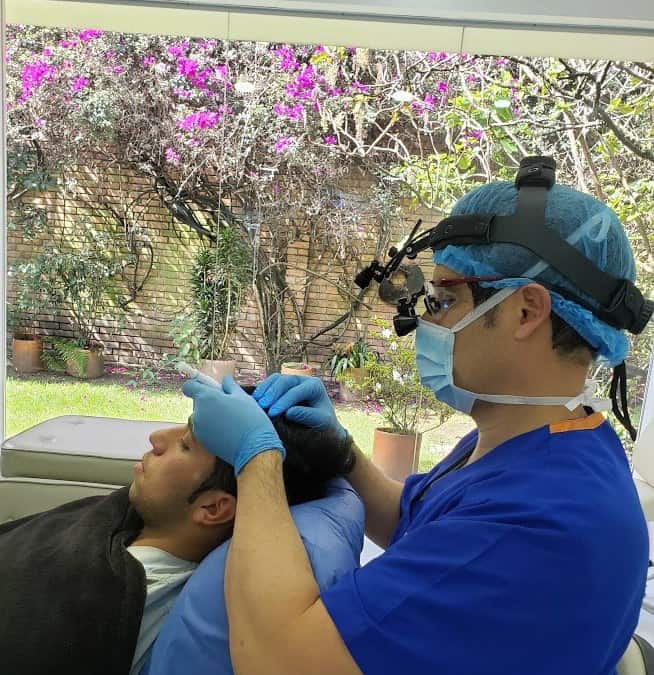
Step 5: The new hair and the new look
In the first week there will be some small scabs and some inflammation that generally disappear completely by day 10. Fortunately this “outbreak” is not painful or disabling (for those who do not know that the person had surgery it seems an irritation or an allergy). You should not expose yourself to the sun or do strong exercises, activities such as walking or office work can be done without any problem.
Between the first and the second month the new hair begins to appear. The speed with which it is born and grows varies, but is about half a centimeter per month. At first, when the scabs come off, they may include some hair. This hair is not the root but the hair shaft. The fall or not of these stems does not affect the course of the transplant.
It is common to initially observe the new thin, wavy and even curly hair shafts, but as it continues to grow the appearance changes to a more natural and definitive one. This slow growth is sometimes preferred by many of our patients, as they allow friends and family to not perceive a sudden change in appearance.
